Hunting down the story behind every crime is this forensic scientist’s passion
Dr Shaloo Malik has handled nearly 18,000 cases in the last 25 years of her service at the Forensic Science Lab in Jodhpur.
By Shikha Sharma
| Posted on December 26, 2023
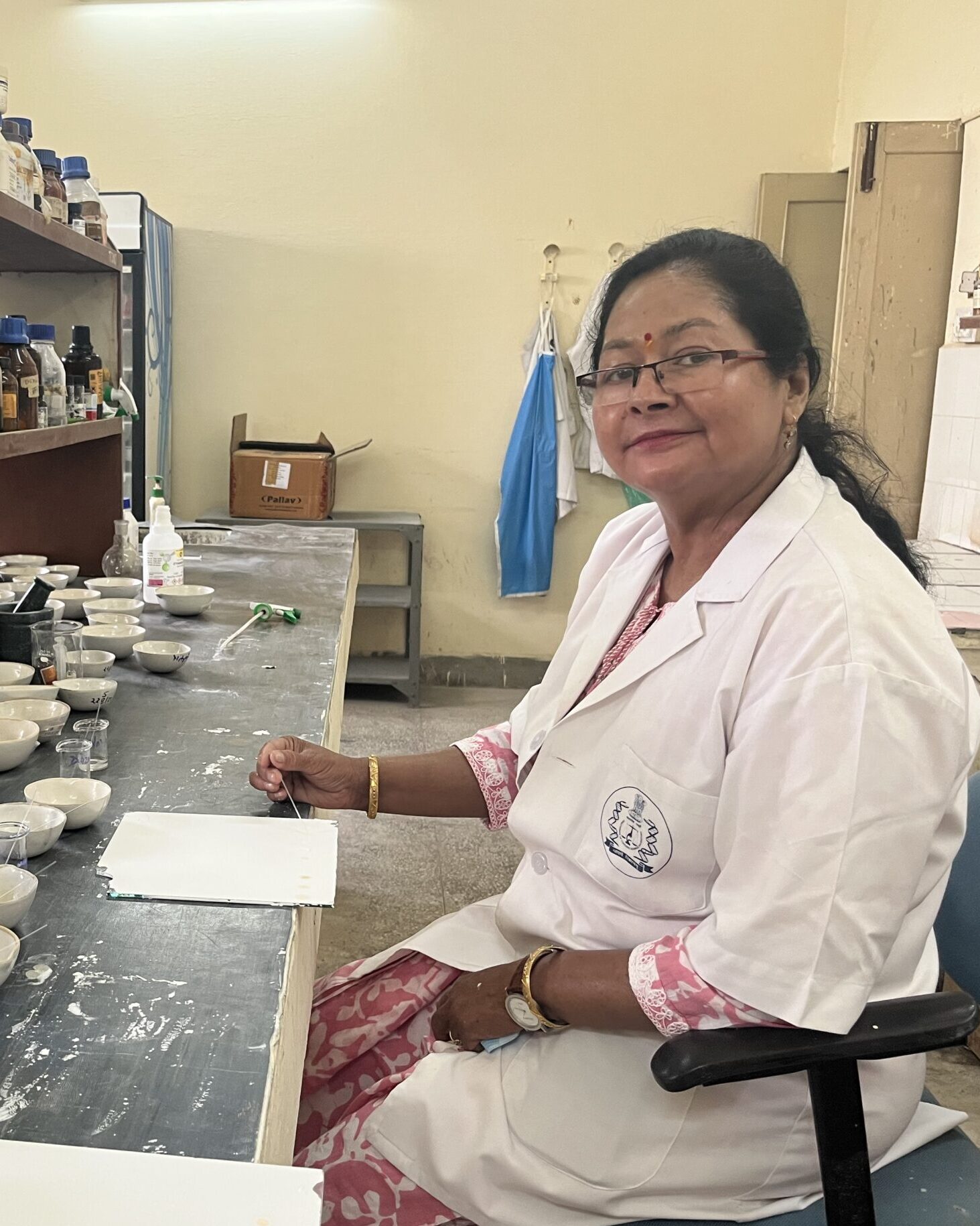
When the charred remains of a 55-year-old man was found on a street in Pali, Jodhpur, the police thought it was a street murder committed to rob him. A dead dog found near the crime scene changed the case’s direction when it tested positive for an insecticide and a known toxin during a toxicology test.
Suspecting that the dog may have consumed the same food as the man, the investigators interrogated the deceased’s daughter-in-law, who confessed to murdering him by poison and burning his body to eliminate evidence. The daughter-in-law was arrested, but for Dr Shaloo Malik, Additional Director (Toxicology), Regional Forensic Science Laboratory (FSL), Jodhpur, who provided the crucial breakthrough, it was just another day at work.
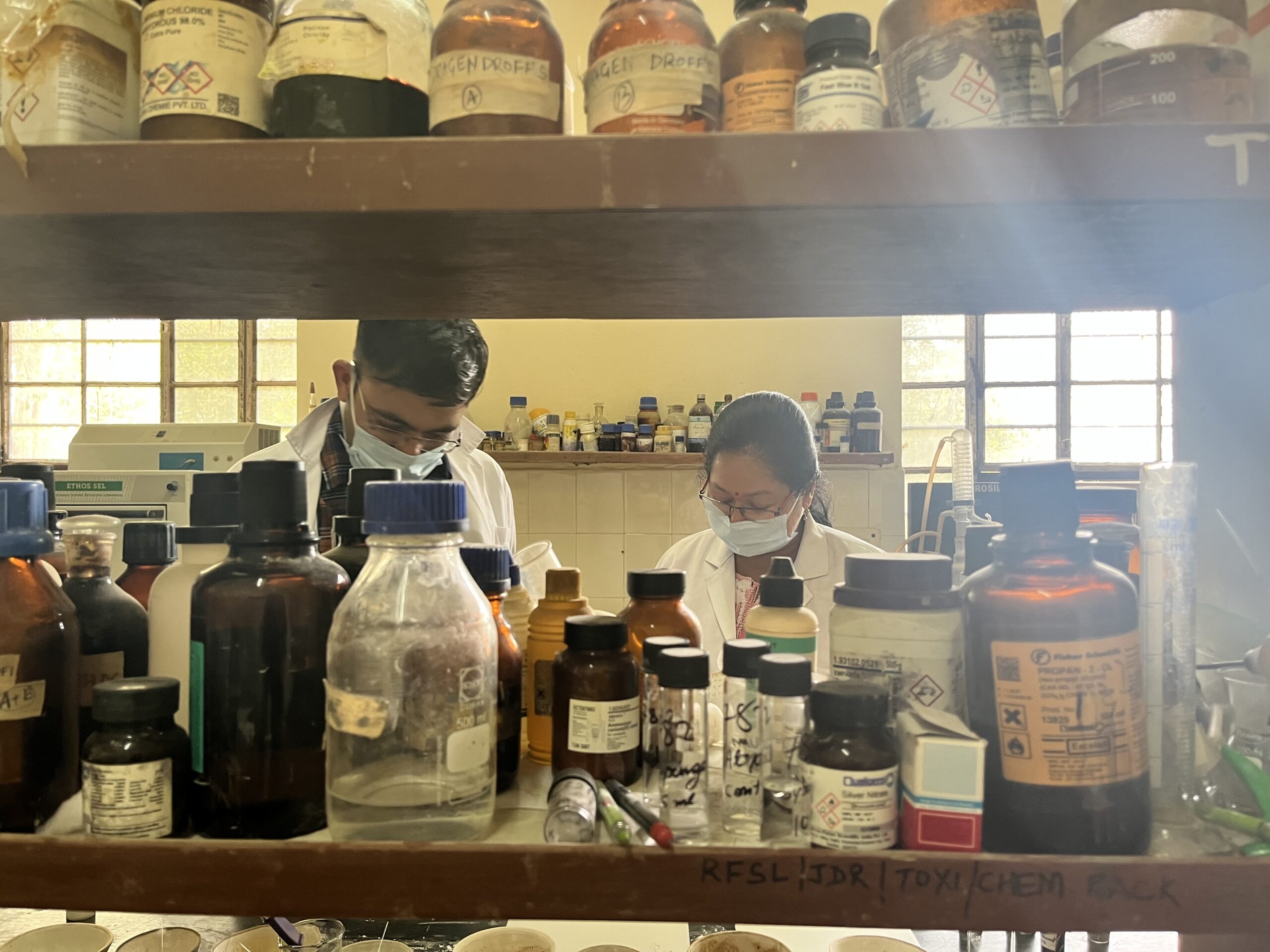
Dr Malik supervising a PhD candidate in the lab
In the last 25 years as a forensic scientist, Malik has handled nearly 18,000 cases and solved cases of manslaughter, rape, bestiality, suicide, sexual assault, the postmortem report of the blackbuck Salman Khan murdered, Asaram Bapu’s potency test, arson and drug trafficking. Name a famous crime that took place in Barmer, Jaisalmer, Pali, Jalore or Jodhpur since 1998, and there is a good chance that Malik was involved in the investigation.
“Blackbuck case was one of the first cases I was involved in. All the scientific evidence had aligned when we analysed the samples [visceral tissues] of the black buck at the lab. In the hit-and-run case, Salman was released, but not in this case. That was the power of evidence and the work we put in,” she says.
Malik specialises in poisons and toxins. “When people think of poison, they have this image of a liquid in a medicine bottle, but the truth is anything taken in more than its prescribed dose can be fatal and poisonous,” she adds.
She shares the recent case of a woman who was found dead at her home with no suspicious leads. “On enquiry, we found that she had recently purchased a hair-removing soap, and the death was caused by either accidental or intentional ingestion of this soap. Now accidental soap consumption is a legitimate cause for death, but no one knew until the case that a hair-removing soap existed, let alone the fact that it was toxic. On surveying literature around the ingredients and running tests in the lab, we found these soaps have barium sulphide, a known poison,” she informs.
Malik says her lab receives an average of 850 to 900 cases each year, and almost every case has its own bizarre backstory. “No two cases are ever the same… Due to recent advances in science, the number of poisons and toxins have increased, so you cannot just rely on routine tests. This is also what separates us from other forensic labs, like fingerprints or water testing, where there is a fixed methodology to follow,” she adds.
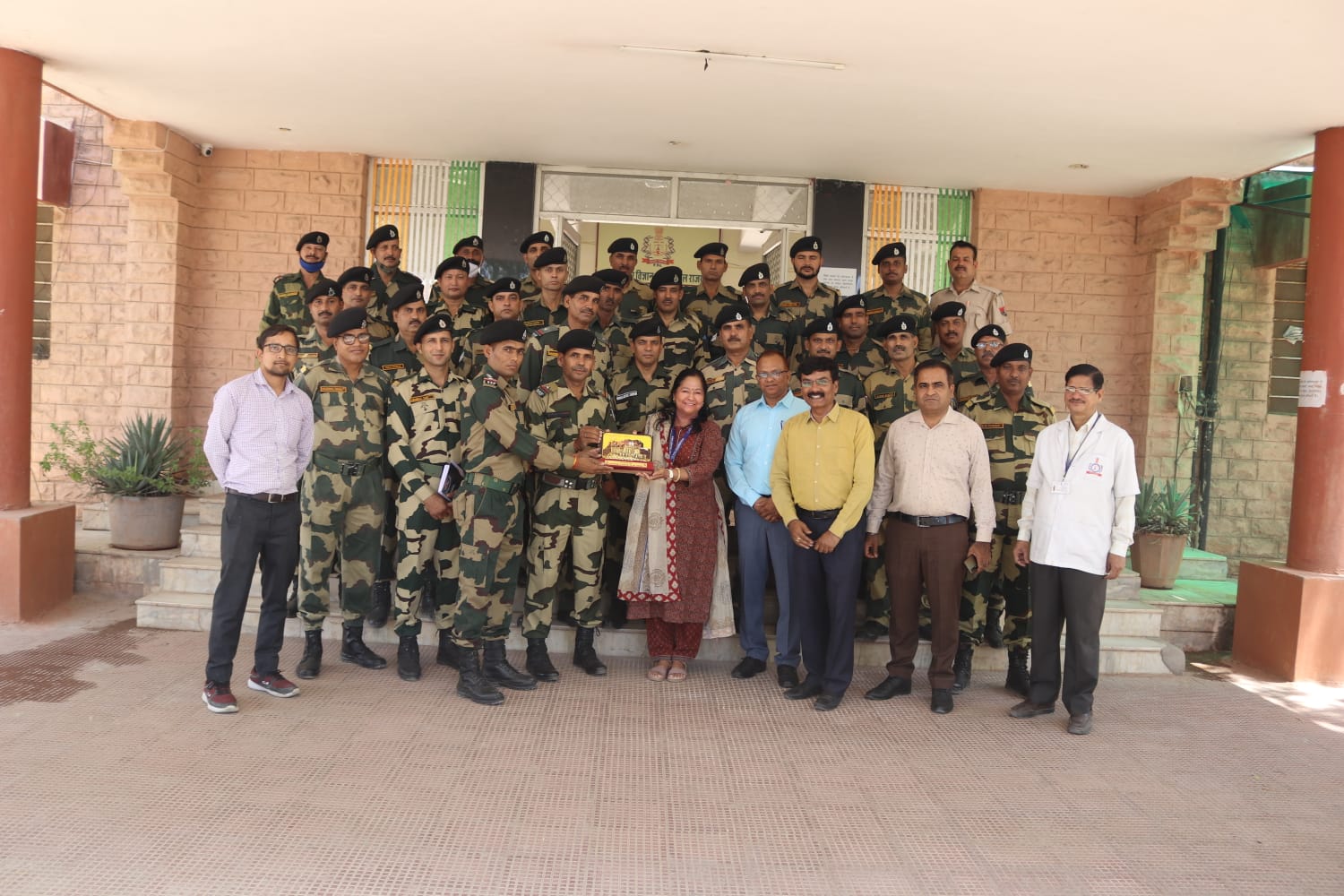
She also frequently trains police, judicial and defence staff on forensic investigations
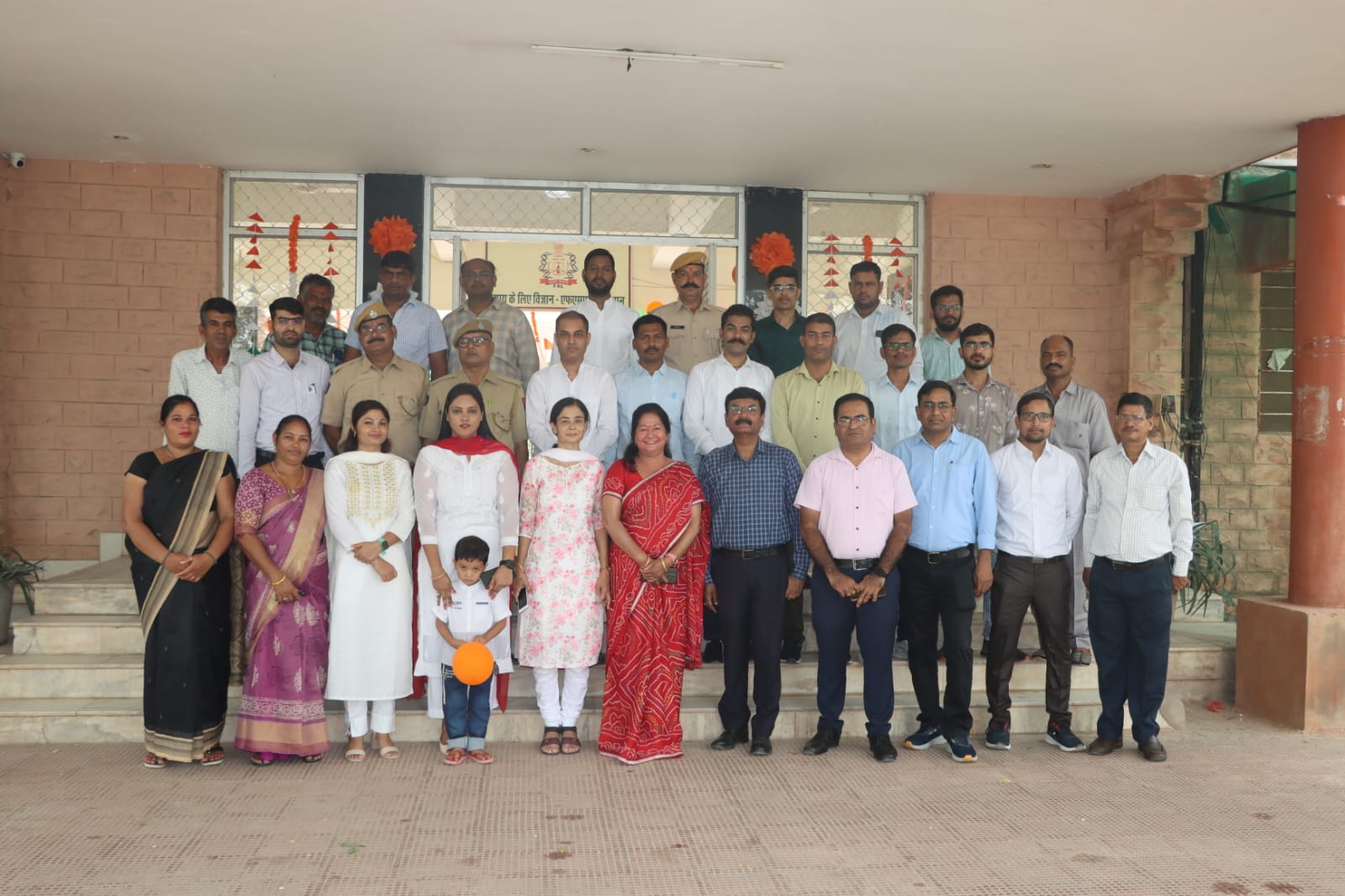
Dr Malik with staff of FSL, Jodhpur outside its premises
Malik’s job is not to determine why someone consumed poison, or was forced to, but to examine whether poison exists or not. “If the poison is detected, it is the police who have to figure out whether poison was given, or taken by that person,” she says.
The Early Years
Dr Malik entered the world of forensic science by chance. After finishing her masters in chemistry from JNV University in Jodhpur with a gold medal, she enrolled into PhD from the same university. Around that time, she got selected to the position of a junior scientist at the Jodhpur FSL, and joined duty in 1998.
“At that time, hardly anyone knew about forensics as a field. For many years, when I had to tell someone what I do, I used to tell them that I do what Dr Salunkhe does in CID. The difference is that I am doing it for state police,” she jokes.
“We call it the state forensics lab now. At that time, it was police vidhi vigyaan prayogshaala. I knew it was a kind of government lab dealing with criminal cases… I was an innocent, studious, protected girl, straight out of college with zero idea about the real world, let alone the world of crime or criminals,” she says.
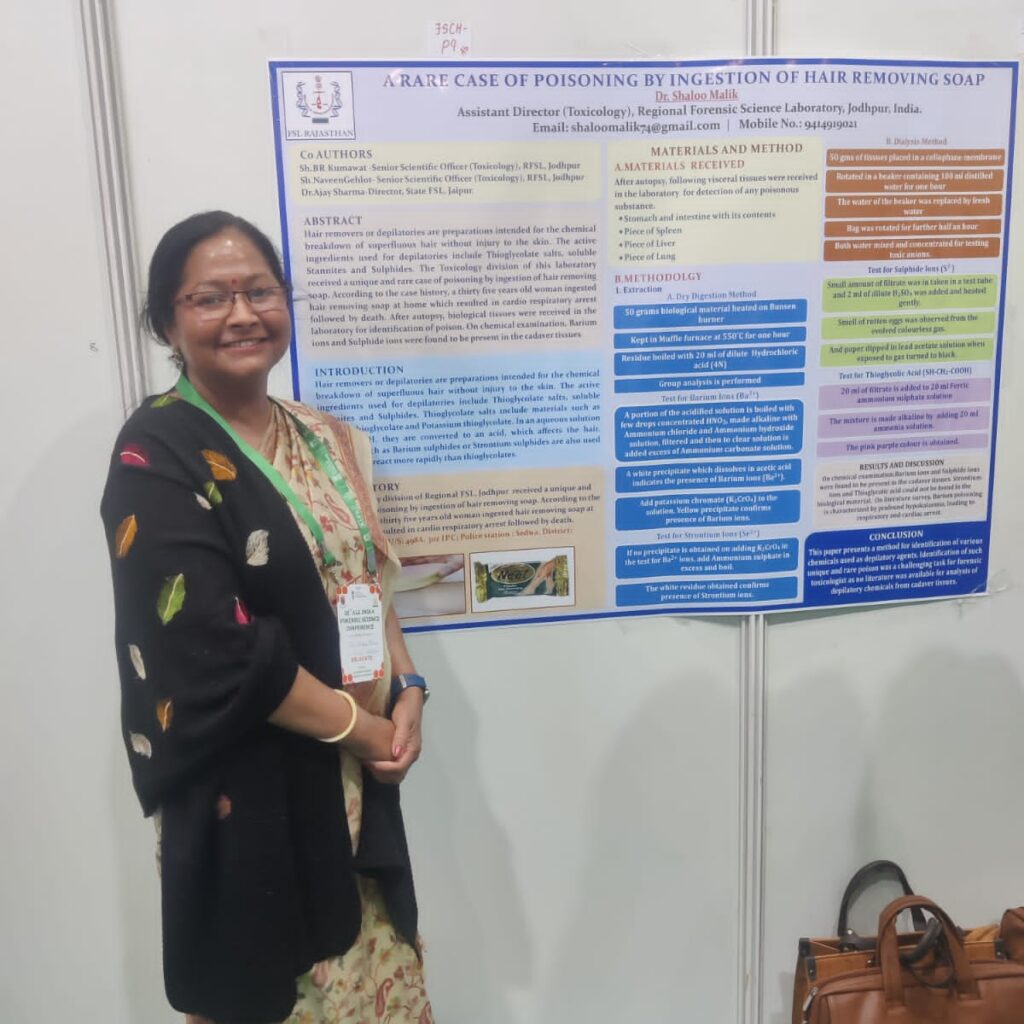
Dr Malik’s paper on poison in hair removing soap won her a lot of recognition from the academic community
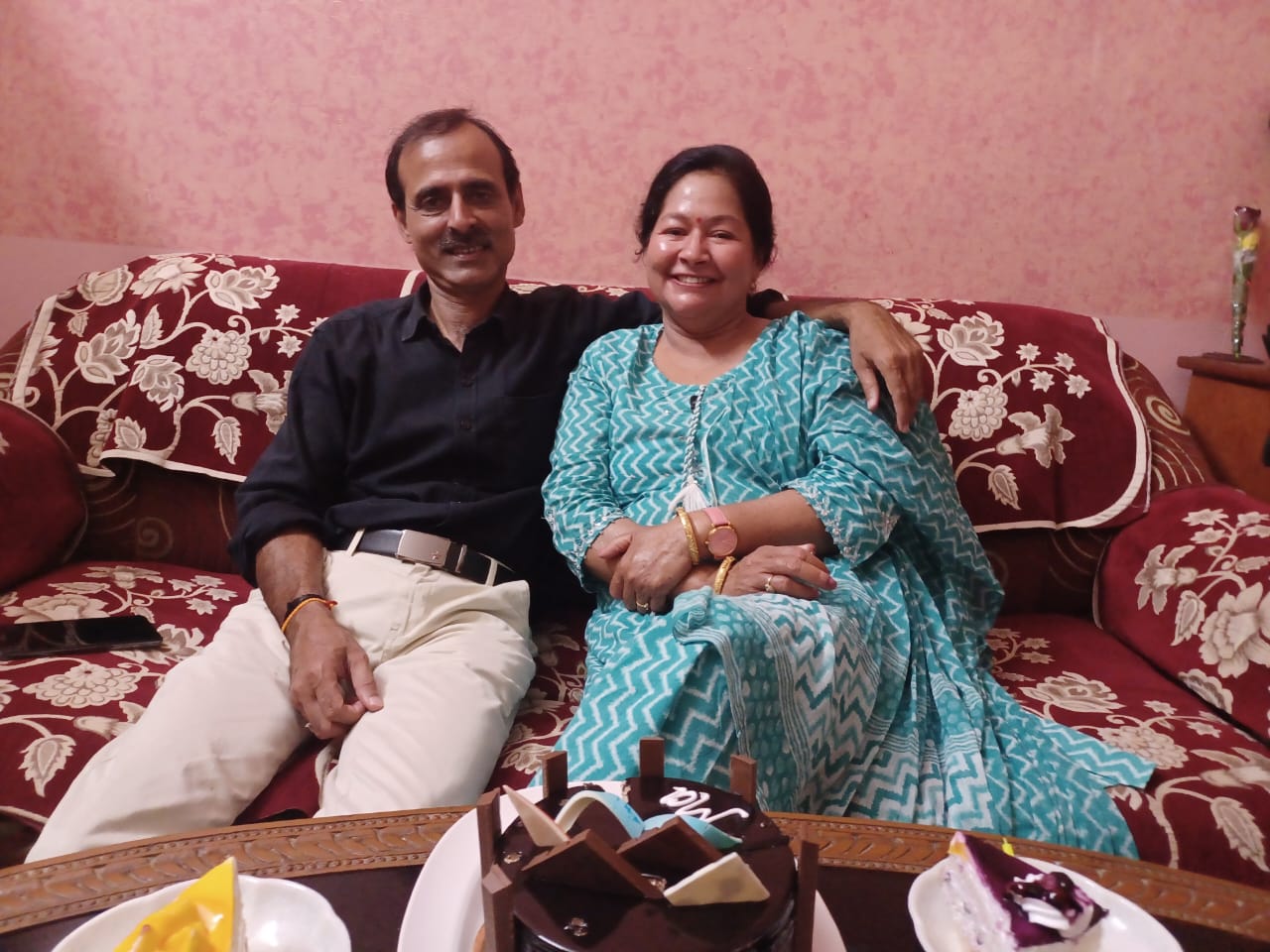
“I had the support of my family, and that really helped me tide over the tough times, especially when my children were young”. Pictured here with her partner
She recalls the first week at the new job as strange and shocking, being hurled into a world of postmortem reports, human parts and biological tissues in glass jars. “We were three girls and 28 boys who joined, and I remember we had gone to see a postmortem at the AIIMS mortuary in Delhi. The three boys at the autopsy fainted. Because I was a biology student and had done a lot of dissection at school, I was still fine. Biological tissue has a terrible stench, but I have never faced any disgust handling it.”
Initially, Malik did not know whether she belonged to the lab, but a two-and-a-half-month training at the National Institute of Forensics Science and Criminology (NFSU DELHI now) changed her mind as she got real exposure to the job, from ballistics to fingerprints, and learnt about the importance of her job. “In those first few months, I realised that I have a scientific temperament and I was meant to be a scientist. I realised that I am capable of sitting with a problem, analysing it,” she says.
However, a thing that has remained unchanged has been the number of women in the labs. “I remember I was the only woman in this department for 10 years, before another female appointment happened… The nature of the work, along with timings, or lack of it, ensure only a few women stick around, especially after getting married or having children. I had the support of my family, and that really helped me tide over the tough times, especially when my children were young,” she says.
The work sphere
By her own admission, the lab work is neither cookie cutter nor for the faint-hearted. “You have to find the story from the specimens. People can concoct a story, the police sometimes can take up the wrong line of investigation, but the findings never lie,” she says.
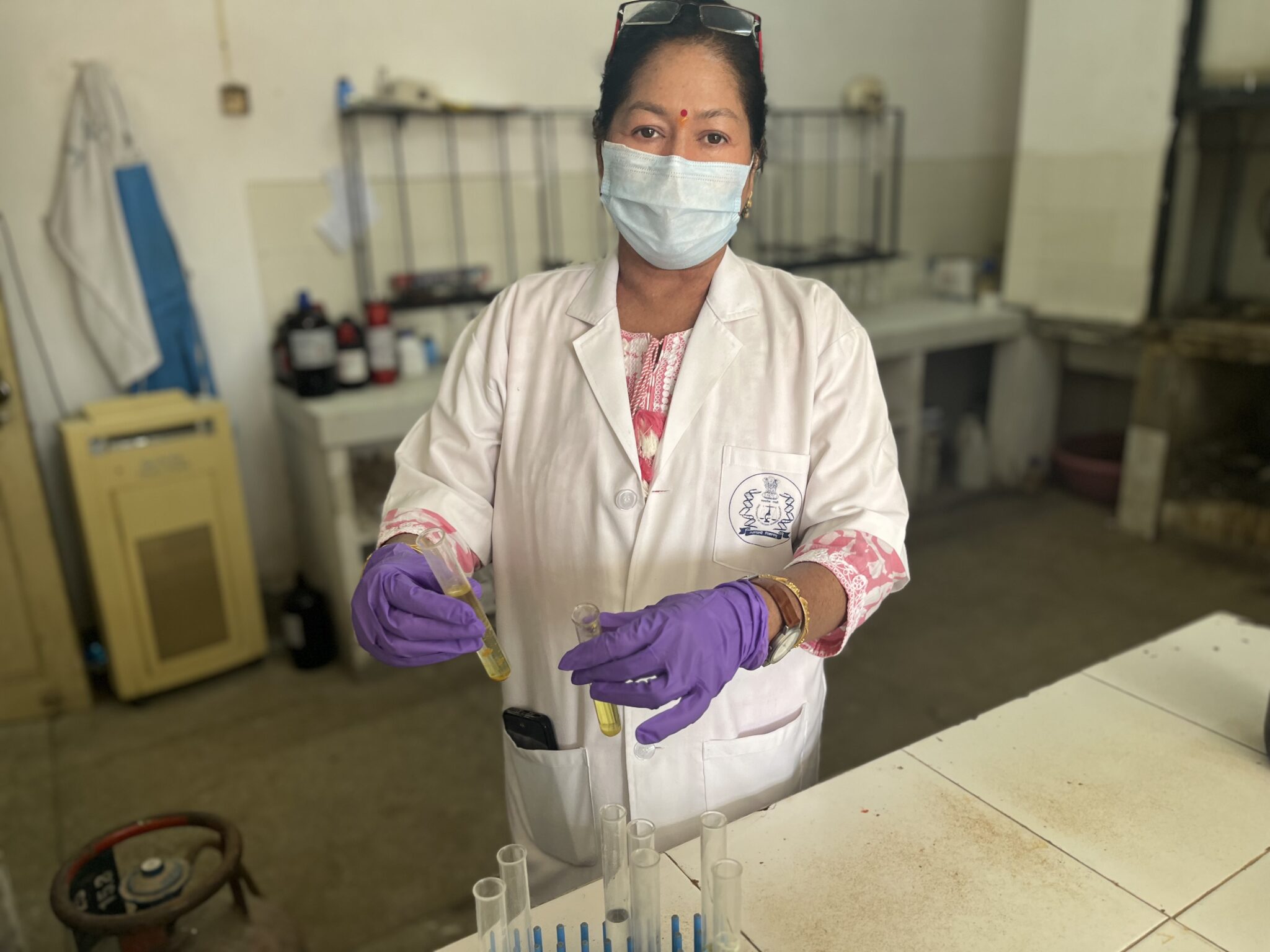
“You have to find the story from the specimens. People can concoct a story, the police sometimes can take up the wrong line of investigation, but the findings never lie.”
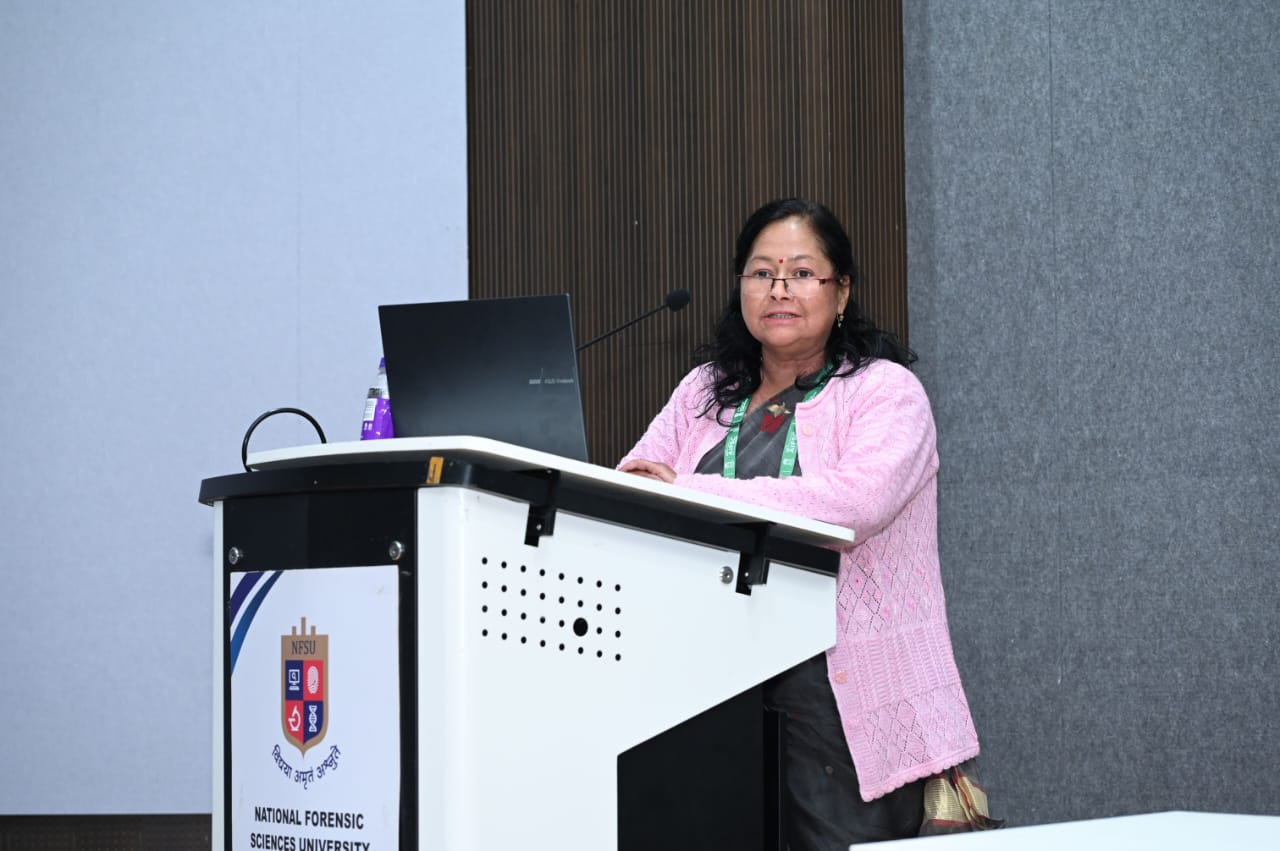
Apart from managing and leading the lab, Dr Malik frequently presents her academic findings at forensic conferences across the country
As soon as the lab receives a call, Malik’s team visits the crime scene and assists the police and investigating officers in collecting evidence. Police send a representative sample of viscera (all vital organs, including stomach, large intestine, small intestine, liver, spleen, kidney and lungs) collected during autopsy in a preserved state.
“Sample collection has certain rules. For example, glass jars that we receive should be properly enclosed; its chain of custody should not be broken. They should be sealed. We should be able to see what is inside the jar, which should also have a clear paper label with all details of the victim. Every exhibit has to be sealed a certain way, packed and then sent, else we do not accept it and register an objection since we cannot work with tampered evidence,” Malik says.
At the lab, the visceral tissue is cut into small pieces (termed opening of the case) manually and tested for poison by treating it with various chemicals. “All poisons are divided into four basic groups — volatile poison, insecticides, drugs, and metallic poison. To determine the tests to be run, we examine case history. We also need an FIR [First Information Report] copy to understand the present line of investigation,” she says.
Often, the detection of poison changes the entire course of investigation. “In many cases, the FIR will say a person died by drowning, or is a classic case of suicide, but our reports detect poison, and it gets converted to homicide… With my experience, I have found that a lot of FIRs are fake.”
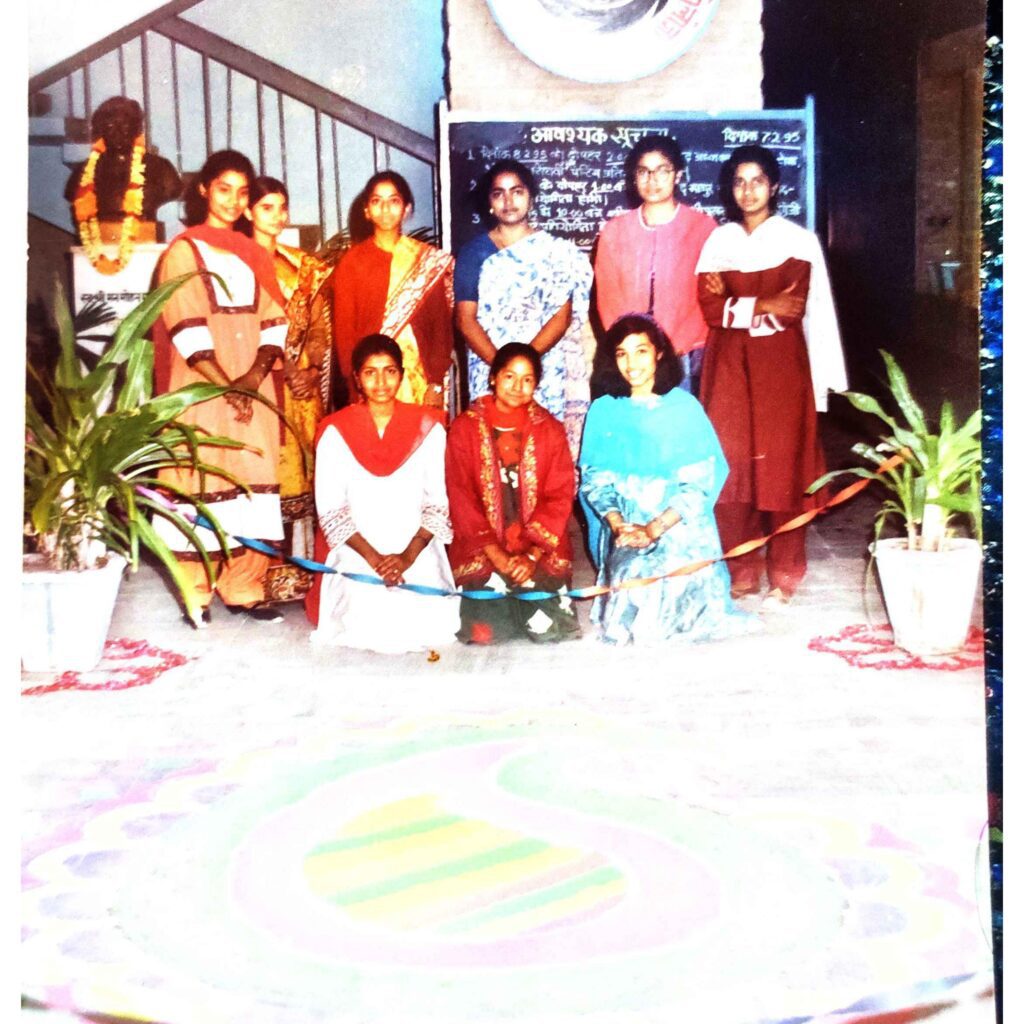
Being a topper, Dr Malik had the pick of choices on course of study after school. She ended up pursuing chemistry at the UG level
This is especially true in cases of gender-based violence, where the modus operandi seems to have become diverse over the years. “Earlier, we saw a lot of cases of bride-burning. They have come down now, as there are other methods… In Barmer, drowning deaths have increased. In Jodhpur, hanging cases have witnessed a steep rise… Dowry deaths are also rampant,” she adds.
Heading a lab
In addition to heading the toxicology department, Malik also helps in the administrative affairs, a demanding role that involves ensuring things run smoothly with limited staff and a shoestring budget.
“We are presently operating at just 60% capacity. There is a huge demand for forensic experts, but we do not get timely budget approvals as allocations go to the more public-facing departments. Our work has no public dealing, so the perception is that there is no tangible loss to the public if the lab shuts down.”
“The truth, though, is that we are also a part of India’s investigating ecosystem, along with the judiciary and police. If we are short on staff, the judiciary gets massively affected. It will affect the quality of justice delivered… The only institution that gives full credence to forensics is the Judiciary,” she says.
In Malik’s opinion, it takes a lot more than just solid scientific grounding to be a forensics scientist. “You need patience, guts, precision, but most importantly imagination. We cannot work without it, especially if we are working against the police’s line of investigation. If a sample tests positive for poison, we have to be able to not only imagine the modus operandi, but also logically construct it, because the court can ask you,” she adds.
“Things do get a bit dark at times… but I am an optimist… It also helps that I really love what I do. That said I make sure I do not take this job home with me,” she says. She credits the support of her family for her accomplishments, and says that it could not have happened otherwise. “There have been countless times when my job has required me to work late into the night, but my family understands. My husband is also a scientist, and I think because of that he understands the job, and what it entails,” she says.
The challenging aspect, she recalls, was when her two sons were growing up. “Because children have different demands, a lot of things need to be done. And I always had this thing at the back of my mind that because of my job, my kids should not suffer [bache bigad na jaayein]… But my husband really helped. I took upon myself to be responsible for everything related to kids. He takes care of duties related to the house. With understanding, we figured it out,” she says.
In the last few years, crime shows on OTT platforms have made forensics cool, but Malik says her world is hardly the way as shown on TV. “It is very, very laborious and rather boring if you were to watch us work. Sometimes, you will find that clue… That is when I know I am onto something.”
The unsolved, the unexamined, and the mysterious deeply interest Malik. Despite the grim nature of her job, Malik laughs a lot. “I have never let anything pass off as just a case number. There is always a story behind each crime, and I am always trying to get to it,” she says.
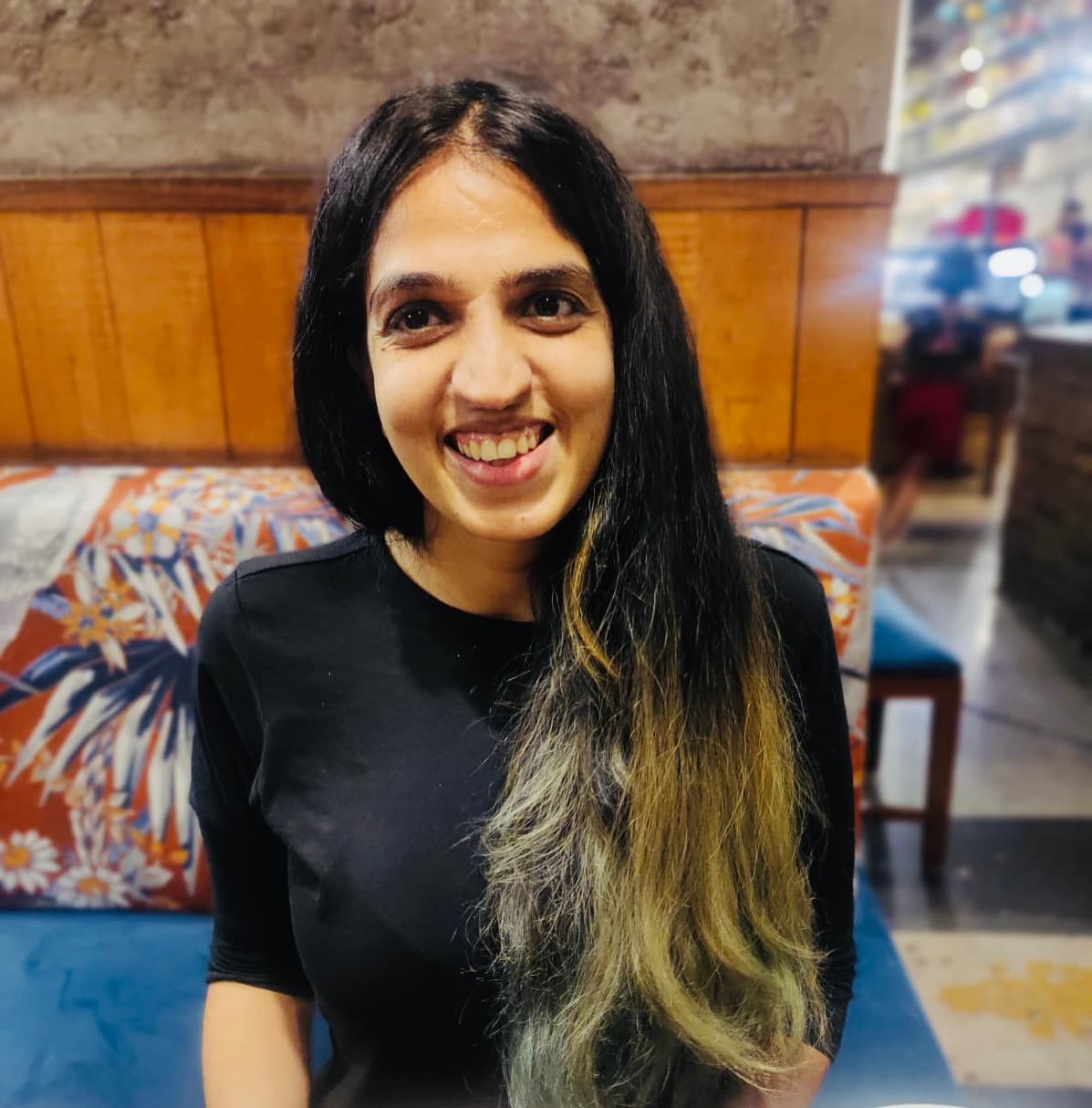
About the author
Shikha Sharma is an independent journalist and photographer based out of New Delhi. She reports on women’s issues, climate change and development. Last year, an article she wrote about the invisibility of migrant women in India, as part of a development journalism fellowship, won the Laadli Media Award for gender-sensitive reporting. She is passionate about storytelling and hopes to highlight stories of underrepresented communities through her work.

Add a Comment